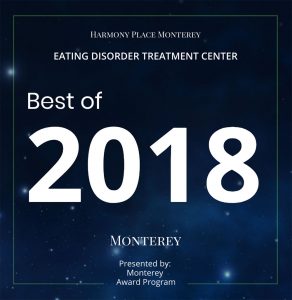For children, a “felt sense” of security becomes internalized and helps them approach the world as a relatively safe place, be able to reach out to others in times of crisis, work difficulties through to resolution (instead of being immobilized by them), and gives them the courage to take appropriate risks in order to grow emotionally.
Attachment — what a strange word! It sounds like an add-on to a vacuum cleaner, but the basis of “attachment theory” is something quite different. It helps us understand what is fundamental to the emotional life of human beings.
We come from within our mothers, born out of the union of two individuals. For survival, we are we must be attached to our mother’s (or some caretaker’s) body for protection. That is how we stay safe from predators when we are small and defenseless.
Everything we learn in the first year of life is acquired within and through this attachment, as is nearly everything we learn in the second year. We are not an add-on, but we are “added to” a family system. The family system we are added into may well be the collision of two very disparate and dysfunctional systems. The collision could be fairly recent, as with newlyweds, or may have been brewing in the cauldron for years. Nonetheless, these family systems play a most influential role in the development of our brain — in the development of our thought processes, which is what determines who we think we are and who we think others are.
We are born from within the system and then become a force in the system. We adapt to the existing system while the system reacts to the pressure of a new force. This takes place while we are helplessly dependent on others for nurture and protection. Human infants are in this dependent state for a very long time, much longer than other creatures on earth. Ironically, the helpless infant immediately demands the focus of attention, at least initially, around the clock. What power the powerless wield!
In practice and in theory, the attachment is the study of how we learn to adapt to perceived danger in the environment (hey, what’s not dangerous when you can’t walk, talk, or feed yourself) and how we learn to regulate ourselves in times of physical and emotional vulnerability. Our attachment systems are activated when we are afraid or sick or hurt, or when we to have let down our boundaries to try to get close to someone. As children, this system is in overdrive to compel us to cling to and stay close to our parents for safety and protection.
So the experiences that two adult parents had grown up in the constellations of their own families determine how they will respond to their children. It is this response (actually this complex system of responses) to their children’s expressions of attachment that are the crucial factors in their emotional development.
This attachment — both the child’s expression and the parent’s response to the expression, was a necessity for the survival of the human species. For the individual modern-day child, the attachment is the force that connects us emotionally to others. It plays a major role in what we call love and springs from our internalized sense of self and other.

Photo by Laura Ockel
Adult Attachment and Intimacy
The Adult Attachment Interview is an assessment to evaluate the present attachment strategy in one’s adult relationships. One’s present attachment strategy was formed in childhood, often remaining unchanged into adulthood. It’s largely unconscious and can develop into a mishmash of complex and contradictory patterns.
Every child has vulnerable emotions. Where children encode attachment is the “… ” — based on the response of the all-important attachment figure} which is usually one or both of the parents. So how does the parent respond? Are they directly rejecting the attachment attempt? Ridiculing? Ignoring? Or are they accepting and validating? Does the parent help the child to regulate the child’s emotional state through modeling and touch? Is the parent consistent or are they unpredictable?
The parent’s response dictates the child’s reaction to and subsequent belief about her felt the emotional experience.
It is the key that ultimately locks into the child her understanding of love, acceptance, and self-worth. The child will likely, through this modeled behavior, treat herself and others in the same way throughout the course of life, or in an attempt to “not treat my children the way I was treated,” overreact in the opposite direction.
So what we learn in the family determines many things, such as:
- What will I do when I feel afraid or alone?
- From whom (and how) will I learn to regulate my emotions?
- Whether I will internalize safety or fear, or any combination of the two, in any given situation…
This is how the human brain works. It adapts to relational issues in the family and then takes that learning out into the world to navigate the present and future relationships. Neural networks are encoded by experience to predict future consequences for optimal outcome. For instance, early fear that is not worked through with a loving and attuned caregiver gets internalized and can become anxiety in adolescence and adulthood.
Take cases of trauma, which can be defined as any experience that is too difficult to handle. When there is no one around to help you feel the feelings, talk through the experience, and help you to make sense of it (which could take quite some time), the experience must be suppressed and sometimes even gets hidden from conscious memory. When a compassionate “talking through” follows a traumatic event, it also serves as a “feeling through” and it allows the traumatized person to safely experience the feelings from the event until they subside.
This process “moves” the event in the brain from an emotional state to a cognitive state (known as narrative memory). The individual is then able to access the meaning the event had in their life, recall the event without feeling as if a dam that holds back emotion is collapsing, and provides them with evidence that even though painful events take place in one’s life they can be worked through. It allows the person to return to a state of mental health. Therefore, the event need not be forgotten or repressed in order to stabilize the person in the present. It is linked to their return to health and becomes one of many events that the individual overcame in the process of becoming who they are now. This is called a “coherent narrative” of the event.
Without this processing, trauma can become a highly-charged, suppressed emotional state and subsequent experiences that our brain links to the event can increase the charge. A present trigger can unleash an extreme overreaction as all that is suppressed explodes through a hole in the dam, which allows past to pour into the present.

Photo by Laura Ockel

Photo by Rod Long
What does all this actually all mean? Well, for children a “felt sense” of security one that is internalized helps them approach the world as a relatively safe place. They can reach out to others when there are difficulties and traumas, work through them to resolution (instead of being immobilized by them), and gain the courage to take appropriate risks in order to grow. Risk-taking, by definition, is to become vulnerable in some way.
Why would anyone become vulnerable if they learned it was extremely dangerous? They’d have to be crazy!
But vulnerability is also the way we live in the present moment and experience life to the fullest. When a lack of success is seen only as a temporary setback, vulnerability is possible. But when failure is experienced as an intolerable devastation, risk-taking and vulnerability will be avoided at all costs. This is a core difference between securely and insecurely attached individuals. Securely attached individuals are willing to risk the vulnerability of love and intimacy.
Harmony Place is located within the vicinity of Monterey. Here at Harmony Place, we know how hard it is to start the road to recovery from sexual trauma, and intimacy disorders. Our medical team and staff have many years of experience with helping countless of people with couples therapy treatment, and intimacy disorder treatment while having compassion and patience for those recovering. We have many services to cater to each individual or couple in regards to their lifestyle and budget.
Contact us today for further information over our services and see which one fits for you. Don’t think you are alone; we are here to help you on your road to recovery.





